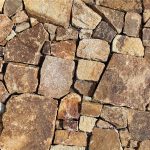Introduction
Travertine is a natural stone that has been used for centuries in construction and interior design due to its unique beauty and durability. In recent years, a new innovation has emerged in the world of travertine - cultured travertine. This engineered stone offers all the beauty and elegance of natural travertine with added benefits such as increased customization options and sustainability. In this article, we will delve into the world of cultured travertine, exploring its characteristics, uses, advantages, and how it is shaping the future of design and architecture.
What is Cultured Travertine?
Cultured travertine is a man-made material that replicates the look and feel of natural travertine through a combination of natural stone particles, resins, and pigments. The process involves mixing these components together and then pressing them into molds to create slabs or tiles that mimic the appearance of natural travertine. The result is a product that closely resembles the natural stone but offers greater consistency in color, pattern, and finish.
Characteristics of Cultured Travertine
Cultured travertine shares many of the same characteristics as natural travertine, making it a popular choice for a wide range of applications. Some of the key characteristics of cultured travertine include:
1. Appearance: Cultured travertine has a similar appearance to natural travertine, with its distinctive veining, color variations, and textured surface. It is available in a variety of colors and finishes to suit different design preferences.
2. Durability: Like natural travertine, cultured travertine is a durable material that can withstand high traffic areas and is resistant to scratches and stains. It is also heat-resistant, making it suitable for use in kitchens and bathrooms.
3. Versatility: Cultured travertine can be used in a variety of applications, including flooring, countertops, wall cladding, and decorative accents. It is a versatile material that can be customized to fit any design style or aesthetic.
4. Sustainability: Cultured travertine is an environmentally friendly option compared to natural stone, as it uses recycled materials and requires less energy to produce. It also reduces the need for quarrying natural stone, helping to preserve the earth's natural resources.
Uses of Cultured Travertine
Cultured travertine can be used in a wide range of applications both indoors and outdoors, thanks to its versatility and durability. Some common uses of cultured travertine include:
1. Flooring: Cultured travertine is a popular choice for flooring in residential and commercial spaces due to its durability and timeless appeal. It can be installed in a variety of patterns, such as straight lay, diagonal, or herringbone, to create unique and eye-catching designs.
2. Countertops: Cultured travertine countertops are a stylish and practical option for kitchens and bathrooms. They provide a natural stone look without the maintenance requirements of natural stone, making them a popular choice for homeowners and designers alike.
3. Wall Cladding: Cultured travertine can be used to create stunning accent walls or feature walls in interior spaces. Its textured surface adds depth and visual interest to any room, making it a popular choice for adding a touch of luxury to modern interiors.
4. Outdoor Spaces: Cultured travertine is also suitable for outdoor applications such as patios, pool decks, and walkways. Its durability and resistance to weathering make it a practical choice for enhancing outdoor living spaces.
Advantages of Cultured Travertine
There are several advantages to choosing cultured travertine over natural travertine or other building materials. Some of the key advantages of cultured travertine include:
1. Cost-Effective: Cultured travertine is often more affordable than natural stone, making it a cost-effective option for homeowners and businesses looking to achieve the look of travertine on a budget.
2. Consistency: Cultured travertine offers greater consistency in color, pattern, and finish compared to natural stone, ensuring a uniform appearance across large installations.
3. Customization: Cultured travertine can be customized to suit individual design preferences, with options for different colors, finishes, and sizes to create unique and personalized spaces.
4. Easy Maintenance: Cultured travertine is easy to clean and maintain, requiring only regular sweeping and occasional mopping to keep it looking like new. It is also resistant to stains and scratches, reducing the need for costly repairs or replacements.
5. Sustainability: Cultured travertine is a sustainable choice for environmentally conscious consumers, as it reduces the demand for natural stone and minimizes the environmental impact of quarrying and transportation.
Thin stone veneer for accent walls in Cultured Travertine
As the demand for sustainable and versatile building materials continues to grow, cultured travertine is expected to play a significant role in shaping the future of design and architecture. Some emerging trends in cultured travertine include:

1. Large Format Tiles: Large format tiles are becoming increasingly popular in interior design, and cultured travertine is no exception. These oversized tiles create a seamless and modern look, perfect for contemporary spaces.
2. Textured Finishes: Textured finishes are a key trend in tile design, adding depth and character to surfaces. Cultured travertine offers a range of textured finishes, from honed to brushed, that can be used to create unique and tactile surfaces.
3. Mixed Materials: Mixing materials such as wood, metal, and glass with cultured travertine is a trend that is gaining momentum in interior design. This eclectic approach adds visual interest and contrast to spaces, creating a dynamic and personalized aesthetic.
4. Sustainable Design: Sustainability is a driving force in the design industry, and cultured travertine's eco-friendly properties make it a popular choice for environmentally conscious projects. Expect to see more sustainable designs incorporating cultured travertine in the future.
Conclusion
Cultured travertine offers a beautiful and sustainable alternative to natural stone, with all the elegance and durability of traditional travertine. Its versatility, customization options, and cost-effectiveness make it a popular choice for a wide range of applications, from flooring and countertops to wall cladding and outdoor spaces. As the design industry continues to embrace sustainable materials and innovative technologies, cultured travertine is poised to remain a key player in shaping the future of design and architecture.
